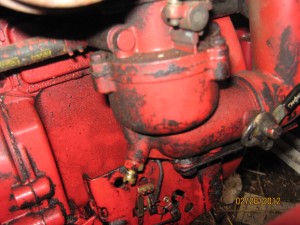I looked at the calendar a couple of days ago and realized March is almost here. Since March is always so busy, I planned to get all of my garden equipment in shape by the end of February.
The last big project is the rotary tiller — its carburetor needs work.
I’ve rebuilt a few small engine carburetors in the past. I’ve even done a couple of auto carbs years ago, so I have a good idea of what it’s all about.
I’m convinced that anyone with a mechanical aptitude and the ability to follow written instructions, can do this job. It takes a positive attitude and some time.
For those who have no idea where to start, I put together a summary of the steps involved. It may convince you to take your equipment to the shop instead. On the other hand, it may inspire you to take the plunge and give it a try. Remember, if you can’t get it to work, you can always take it into the shop later. In the meantime, it will give you a chance to try something new– and an excuse to use that new tool set you bought.
I did catch a little break — February has 29 days this year. That gives me an extra day to finish repairing that tiller before my deadline passes.
Bob

